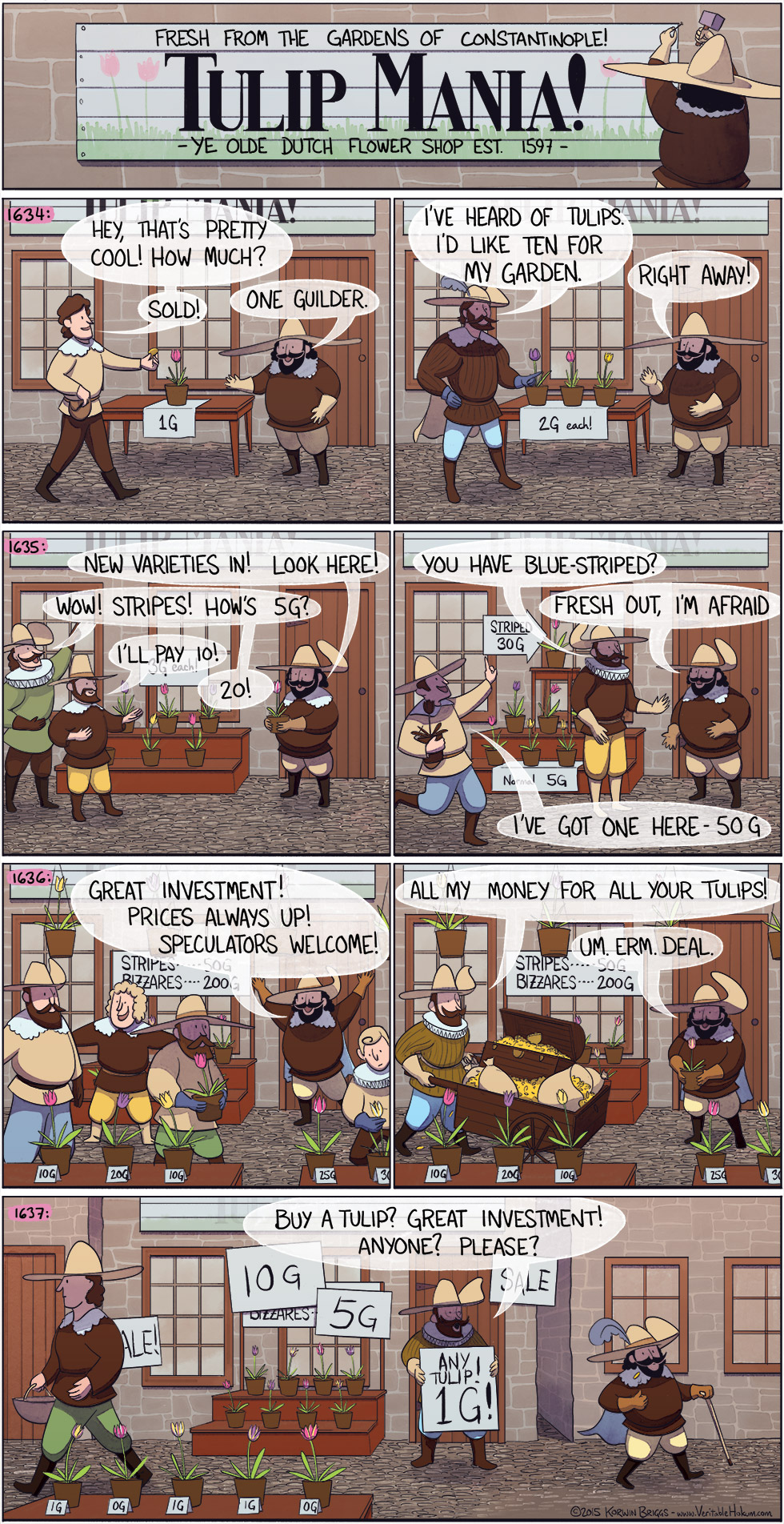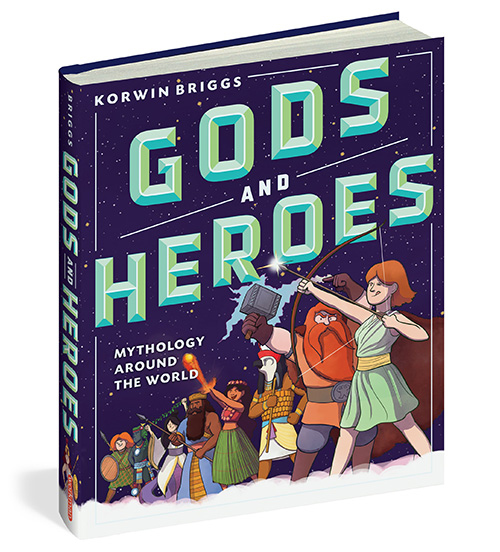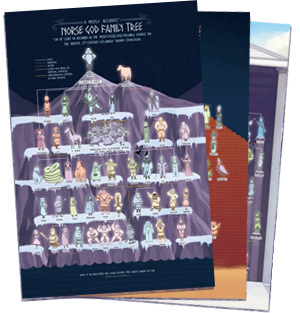When a Tulip Was Worth More Than a House
Note: the symbol for guilders was actually a curly f, for “florin”, but I was worried that’d confuse people so I just wrote g’s.
Note also: people were actually trading tulip bulbs, not tulip flowers. But who’d recognize a cartoon version of a tulip bulb? So I drew flowers.
As best I can tell, here’s what happened. Tulips arrived in the Netherlands in the 1500’s. They came in different colors and were brighter than most of the other plants that would have been available to a dutch merchant at the time, so rich folks started putting them in their gardens, which made them a luxury good and drove up their price.
Tulips take a while to reproduce, either via seeds or new bulbs budding off the original bulb, potato-style. The special stripy ones are actually the result of a disease, so they’re even rarer, both because it only spreads via bulbs (not seeds) and because diseased things tend to die young. Tulips also reproduce.
So you can maybe see why the bubble started – buy a tulip, it’ll make more tulips, and they’ll all be worth more than the original in a while anyway because everyone wants tulips. And as more people started buying them as an investment, the price went up further, until people were buying tulips because the prices always went up because people were buying tulips because the prices always went up, etc. At the height of the bubble, an especially rare tulip bulb was allegedly sold for 2500 guilders. It’s hard to compare the value of money directly across, what, four centuries? Because the economy in general has changed so much. But 2500 dutch guilders was at least fifteen times more than a skilled craftsman could make in a year.
And then, in 1637, I guess they were finally too expensive, because all of a sudden people stopped buying them and the prices collapsed. Tulip Mania had ended, but not before someone named Jan Brueghel painted this spectacular portrait of tulip speculators. Note especially the speculator in the bottom right peeing on his tulips, and the speculator in the background riding his tiny speculator-sized horse.
I think Tulip Mania is one of those things that sounds so dumb that you can’t consider it without getting smarter. I start out laughing, but then I wonder: why was a tulip worth more than a house? It’s a tulip, right? It’s pretty, but so are other things. It’s not useful. It’s almost as if value isn’t intrinsic to an object at all, but just an abstract concept that we attach to things. It’s almost as if our entire economy is based on an arbitrary system of cooperative delusion, a massive, generations-long LARP-for-food.
But then again, I found an Economist article that blamed a change in tulip law around 1636 – where before, if you’d signed a contract to buy tulips, you had to buy the tulips (i.e. tulip futures), now you could back out by paying a small fine, which meant you could speculate without being on the hook if it went wrong.
On a barely-related note, I’m starting a store! I’ve been slowly making moves toward this for a while, but now (as soon as I get some required paperwork back from some government organizations) you’ll be able to buy some posters. Just a few to start, but more as time goes on. And that’s all the information I’m sure of right now so it’ll have to do. Stay tuned! Oh, and also stay tuned for Egyptian gods, because I am drawing them.
~Korwin


